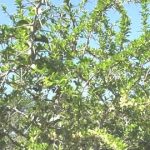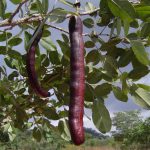TREE LIFE
FEBRUARY 1981
MASHONALAND BRANCH
Tuesday 3rd February : Botanic Garden Walk. Meet in the car park at 1645 hours.
Saturday 14th February : Learner Group, Mrs. Gill Masterson will be holding a learner group on this day. The group will visit an interesting site in Sentosa. Please phone Mrs. Masterson on 303435 to book and arrange meeting.
Sunday 15th February : AGM. This will be held at Mr. Trevor Gordon’s farm, Darwendale. Bus leaves Monomatapa Car Park at 0830 hours and Reps Car park at 0840 hours. Bring lunch, and mugs as tea will be provided. Booking slip attached. Price $3.00 in advance please.
NOTICE OF ANNUAL GENERAL MEETING
Formal notice in terms of the constitution has already appeared in the December Newsletter. The following is the Agenda for the 31st Annual General Meeting of our Society.
- Apologies for absence
- Confirmation of the Minutes of the last meeting
- Matters arising there from
- President’s Report
- Treasurer’s Report
- Appointment of auditor
- Election of Officers
- Proposed amendment to the Constitution
- Any other business.
DRAFT RESOLUTION TO AMEND THE CONSTITUTION PROPOSED IN TERMS OF RULE 10 OF THE CONSTITUTION
It is recommended that the Constitution of the Tree Society of Zimbabwe which came into force on 23rd February 1976 be amended as follows :
(a) In Rule 6, by the deletion of “President” and “Vice President” and the substitution of “Chairman” and “Vice Chairman”
(b) In rule 9 –
(i) in the first paragraph by the deletion of :President” and “Vice President” and the substitution of “Chairman” and “Vice Chairman”
(ii) by the repeal of the third paragraph and the substitution of the following paragraph
“The Chairman or in his absence the Vice Chairman shall preside at all meetings of the Society except the annual general meeting. In their absence, the meeting shall elect a member who is present to act as Chairman of that meeting”
(iii) in the sixth paragraph by the deletion wherever the words occur of “President” and “Vice President and the substitution of “Chairman” and “Vice Chairman”
(iv) in Rule 15, the deletion of “Chairman” and “Vice Chairman” and the substitution of “Branch Chairman” and “Branch Vice Chairman”
(v) by the addition of the following paragraph-
“A member of the Society may be elected at an Annual General Meeting as President of the Society and shall hold office for such period a may be determined at such meeting. The President shall be an officer of the Society and shall preside as chairman at the Annual General Meeting but shall not be a member of the Committee. In the event of the position of President falling vacant no successor shall be appointed until the next Annual General Meeting”
Proposed by Mr. D. Irvine
Seconded by Dr. K. Davey Date Lodge with Secretary : 2nd January 1981
BOTANIC GARDEN WALK, 6TH JANUARY
Led once again by Tom Muller, we strolled the forest section, detouring briefly to discuss the valuable tamarind, Tamarindus indica. Fruit, flowers, leaves and seeds can be eaten, and the medicinal qualities of the fruit pulp is well documented.
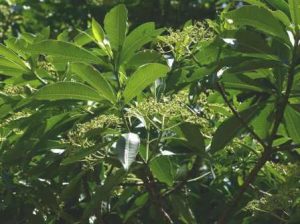
Rauvolfia caffra, Photo: Bart Wursten. Source: Flora of Zimbabwe
Rauvolfia caffra, a tree of drier forest, was in full fruit. Crabia brevicaudata, so beautifully in flower two months ago was covered in pod. Nearby was this species co-dominant of the Mount Selinda forest, Chrysophyllum gorungosanum, with its drought resistant coating of russet hairs on the back of leaves.
The family MELIACEAE is well represented in our fragmented forests; the valuable mahoganies being members.
Tom pointed out that forests are not static groves of trees, but ever changing systems, where early trees, the “pioneers” create a suitable environment for the hard wood species which may eventually supersede these predecessors. Signs of human history may be apparent due to this phenomenon. Open spaces of villages long since disappeared, will contain signs of succession, and can be quite accurately dated from the age of pioneer trees.
THE EDITOR THANKS MR. DICK PETHERAM FOR THE FOLLOWING SUMMARY OF THE JANUARY OUTING.
Plans for the January 18th originally envisaged a journey to Bushman’s Point at Lake McIlwaine but we forgot to tell the weather people. They must have assumed we were going on a duck hunt. There was rain in Salisbury throughout the preceding week and early morning drizzle on the Sunday.
Fortunately, no bus had been booked. Transport was shared and we set off for the lake, pausing near the Arboretum where, in modern parlance, there was “an exchange of dialogue”. Those in favour of spending the day near Hunyani Hills Hotel rather than face the hazards of the Bushman’s Point road, quite failed to convince those who wished to proceed to Bushman’s Point, that there was any merit whatsoever in the alternative. However the Bushman’s Point protagonists, a small, vocal, but distinguished minority, graciously fell in with the majority view, and forbore for most of the day to gaze too pointedly, through the rain, in the direction of their earlier choice.
We found a pleasant parking spot in the area of the Lake Tearoom, a little beyond the Hunyani Hills Hotel, and managed to fit in a pleasant stroll before the rain resumed. Within minutes of arrival we were examining, on the nearest termite mound, Maerua juncea and Diospyros lycioides, shrubs both in generous fruit, and the thorny Capparis tomentosa creeper on which only one or two green but well formed fruits were found. The Maerua is a straggly plant, with glabrous leaves anything but uniform in shape and size. The Botanic Dictionary, I find, says the leaves can be simple or trifoliate. They can be both, on the same bush, so it is no wonder that they cause a certain amount of head scratching. But it is the dark greenness of the branches and the inch long, rugger ball shaped fruit, that stands out at this time of the year. The fruit of the Diospyros or monkey plum is unmistakable because of the conspicuous calyx which, in “Palgrave” has earned it the name of “star apple”. The Capparis is related to a Mediterranean species, from the flower buds of which, capers are derived.
Other shrubs on the same termite mound were Ehretia obtusifolia, always unobtrusive until it assumes its early summer garb of delicate mauve flower panicles in October or thereabouts, and catches the eye with clusters of red berries a month later; and Pavetta gardeniifolia, the attractive shade loving little evergreen, with its interesting patches of bacteria – fixing nodules in the leaves. The nodules in this specimen were unusually prominent.
A liane, subsequently identified as Adenia digitata, had us guessing. Its markedly digitate leaves and channeled rachis should I suppose have given us a clue.
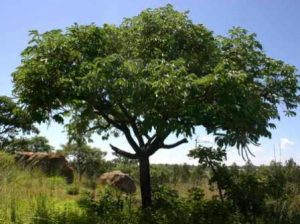
Cussonia arborea. Photo: Bart Wursten. Source: Flora of Zimbabwe
The top canopy of the mound vegetation included a tall, graceful Euclea divinorum with typically wavy leaf margins, and a Cussonia arborea –to which the unromantic common name “Cabbage tree” does less than justice. In the immediate vicinity also, was a small Schotia brachypetala, another tree which we associate quite positively with termite mounds. Unfortunately it was well past its spectacular red flowering stage.
Around and about were the square stemmed Grewia flavescens, the winter flowering Cassia, C. singueana, and Cassine aethiopica, its alternate leaves typically leathery, dark glossy green above, lighter below, with serrated edge. The last named tree had a few flowers, tiny yellow green. There were lots of Musasas and Monotes glaber, a few of the latter in flower. Ochna schweinfurthiana, the large serrated leaved ochna, Faurea speciosa, that attractive member of the Proteaceae family sometimes known as the broad leaved beech wood, and the velvet leaved combretum, C. molle, were also numerous. The wattle like Peltophorum africanum was fairly abundant, more in pod than in flower. A small violet tree, Securidaca longipedunculata, carried a few pods and solitary specimens of Strychnos cocculoides and S. spinosa grew close together, as if for mutual moral support.
Rain sopped play after an hour or so, and we retired first to the cars and then to the big thatched shelter of the tearoom. There we had a fairly prolonged tea, with a great deal of animated conversation. Thereafter, the very kind and cooperative proprietress Mrs. Prince, permitted us to transfer our picnic lunch baskets into the shelter, where we stayed throughout a lengthy spell of rain. Lunch was followed by a charmingly informal dissertation by Meg Palgrave on the subject of vegetation characteristics and field observations as an aid to plant identification, and more particularly, at our request, on the use of the “key” in Palgrave’s Trees of Southern Africa. Leaf specimens from a Ziziphus mucronata were used for illustrative purposes.
The rain stopped, the clouds lifted, and we spent the cool, crystal clear afternoon following tracks along the lower contours of the Kopje behind the tearoom. There were pleasing views of the lake all along, especially for those who reached the promontory obliquely overlooking the spillway. The lake was spilling, which was an added bonus for them, but the walk was a pleasure for all.
Among the more interesting of the plants we came upon were Tapiphyllum velutinum, the aptly named “velvet leaf” in fruit; Osyris lanceolata, the numerous brittle leaves of which always seem to have a slight greyness to the green; and the latex yielding Euphorbia matabelensis, with smallish narrow leaves, some alternate and some in clusters along the stem. The small Rhus kirkii put in an appearance here and there, looking particularly perky at this season of the year with its strongly veined, matt, trifoliate leaves, and flower spikes, all displayed at a jaunty angle. Rhus longipes and Rhus tenuinervis were also seen.
One or two of the many mahobohobos, Uapaca kirkiana, on the hillside were in flower and others in small fruit. We passed an impressive little collection of Albizia amara, and several scattered specimens of Albizia antunesiana.
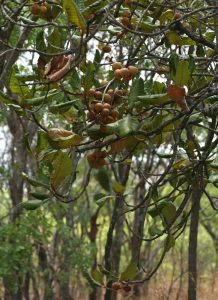
Uapaca kirkiana. Photo: Bart Wursten. Source: Flora of Zimbabwe
The rusty red branch tips of the “mukarati”, Burkea africana, were almost glowing with a bloom and freshness bestowed by the rain. The mukwa trees, Pterocarpus angolensis, also looked fresh and vigorous, with young green pods in some cases. Pterocarpus rotundifolia, the mukwa’s round leaved cousin, occurred infrequently, and the so called “mountain acacia”, Brachystegia glaucescens, preferred the more cliff like topography near the Dam wall. Protea welwitchii was plentiful, P. gaguedi a little less so, and, I believe, only one or possibly two plants of P. angolensis were seen during the day. The pinched leaf base of Turraea nilotica was again found to be a useful aid to identification. The local residents had, understandably, beaten us to the fruit of the sour plum, Ximenia caffra. The figs were represented by Ficus capensis and F. burkei. The bright red fruits of Palgraves “Christmas berry” Psorospermum febrifugum, used the background shades of green to show themselves to good advantage. Ozoroa insignia, subsp. reticulata, the tar berry, Lannea discolor, Maytenus senegalensis, Brachystegia boehmii, Pseudolachnostylis maprouneifolia, our duiker berry, and Bauhinia thonningii, the monkey bread tree which has now reverted to Bauhinia at the hands of the taxonomists, after being classified for some years as a Piliostigma, all staked their claim for record. So did Garcinia huillensis, Vangueria infausta, Vangueriopsis lanciflora, Heteromorpha trifoliate and Flacourtia indica. A single specimen of Terminalia stenostachya was spotted, and one of Ochna puberula. Two gardenias occupied our attention; one in the morning and one in the afternoon. Mr. Drummond has since identified the afternoon specimen as G. ternifolia subsp jovis-tonantis. I am glad I placed no bets. One of our members has a leaf and fruit specimen of the plant we saw in the morning, and has promised to get Mr. Drummond’s ruling on it.
It was a light hearted enjoyable outing with nothing startling in the way of trees or shrubs, but with a great deal to delight the eye.
-R.W.P
PRIVATE TRAVELS
Recently I have paid visits to two interesting tree sites, one near Pretoria and the other in Zimbabwe. Interested members who may be visiting Pretoria should visit the “Wonderboom”. Apparently this “tree” does not show the typical growth form of the species (Ficus salicifolia – still called Ficus pretoriae on the notice board at the site). Where ever the branches of the original tree drooped and touched the ground, they rooted and eventually formed new trees. There are now at least three distinct generations from the original tree – whose age is calculated at about 1000 years – covering a vast area. We are told by the information board that, in the past, 1100 men have slept at one time in the shade of this remarkable phenomenon.
The trees were in fruit (early December) and large numbers of birds, both frugivorous and insectivorous species were in attendance.
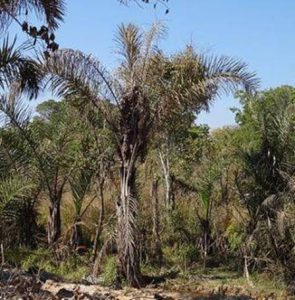
Raphia farinifera. Photo: Wikipedia
The Zimbabwean tree site was the Raffia Palm Grove near Sipolilo. Here, near the Northern end of the Great Dyke, in an ever damp seepage area is an 80 acre protected area containing a relic population of Raphia farinifera. With the dyke rising behind, almost devoid of trees and shrubs, the area truly bears the air of a primeval forest. The largest trees are of considerable stature, the leave alone may reach 18m. Many were in fruit, and the shiny cone like seeds littered the ground. This species unfortunately displays the habit of dying after setting fruit, so trees are comparatively short lived.
Unique furniture may be constructed from the leaves of these plants, but, of course, the Sipolilo palms are protected and therefore, we hope, safe from exploitation for the time being.
MATABELELAND BRANCH
Sunday February 1st : To Burnside. Meet at 0830 hours at the Relay Mast on the Circular Drive, Burnside.
SundayMarch 1st : This has been postponed from February due to heavy rains. To Mopane woodland in the Rhodes Matopos National Park. Meet at Retreat at 0830 hours.
April – May The committee is considering going to the Shashi Wilderness Camp to identify trees for the Wild Life Society. It will mean staying one or two nights there, and will depend upon bookings.
MATOPOS NOTES
What a different aspect the Matopos National Park presents in summer; such an abundance of vegetation; the hard outlines of most granite kopjes are masked and softened, streams flow over rock slopes, shining in the sun, and at the peak of the rain season they sometimes form temporary lakes at the base. No wonder there are types of vegetation found here which are otherwise only found on the eastern border of Zimbabwe. In summer many leaves are heavily scented and there are a great number of flowers, the smallest being 2 mm in diameter. Only lichens appear not to change with the seasons.
Our Branch of the Tree Society has listed 200 species on our field card, but without a doubt many others are hidden in the clefts of such hills as Inungu, Efefi or in the high castle kopjes of the Msheleli valley. We have not yet found Tree Ferns. It often strikes us how attractive tree trunks can be, for example the bark of Pittosporum viridiflorum is grey with black lenticels dotted thickly over it (note the distribution map in Trees of Southern Africa by Coates Palgrave, p.203; Ficus soldanella, growing on the slope of Imadzi Hill forms a sort of creamy green stream pouring over the grey granite rock, and it has leaves as large as plates; there is the smooth dark bark of Ptaeroxylon obliquum and of course, the red and green paper tree trunks.
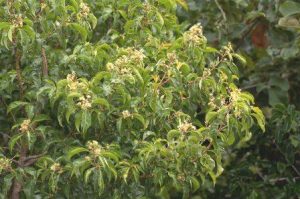
Heteropyxis dehniae. Photo: Bart Wursten. Source: Flora of Zimbabwe
Afzelia quanzensis blooms in early summer, and I enjoyed reading in van Wyk’s book that “when the tree comes into bloom it is an unforgettable sight”. Its scent is like the linden trees of Europe. Heteropyxis dehniae is a delight at all times of the year with its shiny scented leaves, its pale bark and clusters of flowers, and it grows in profusion along streams. Less obtrusive is Turraea obtusifolia with its attractive white flowers. One must be alert to see the flowers of Serophytum equisitoides as their flowering season is short and related to the rains.
A crash, as if two furniture vans had collided, followed by rumble shattered the silence as we watched Tsessebe grazing one day. It was an avalanche on the nearby dwala; one of those poised rocks which never appear to change position had tumbled down. It is most unusual to come across anyone who has seen or heard of falling rocks, but with the heavy rains we had in December it is not surprising that they do occasionally become dislodged. We subsequently passed by the area but were not able to see any sign of it; the hyraxes which lived in its path must have dived for shelter.
The raucous call of the Purple crested loeries arrests our attention now and then, the barks from baboons are heard not infrequently. Once a leguaan was disturbed by us and it ran to cover in a vertical crack in the rock and remained there protected as much by mottled colour of the granite as by the narrow space. Stingless mopane bees, Trigona, frequently flit about our faces collecting – well, not nectar! When the grazing is good, all herbivores large and small have their heads down feeding on the lush vegetation.
There are several kinds of lily, spider lilies which bloom soon after the first rains, Scadoxus multiflorus and Gloriosa superba. How different the drought adapted plants look in summer; the fan like leaves of Myrothamnus are open and green and some bushes are shoulder high; Euphorbia ingens and Xerophytum equisitoides, already mentioned, put forth slender leaves. In fact the summer vegetation provides a big contrast to winter. What an interesting thought too that almost every tree and shrub is useful in some way to man or animal.


